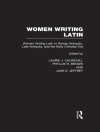Langston Hughes’s Not Without Laughter (1930) is drawn in part from the author’s own recollections of youth and early manhood. This stirring coming-of-age tale unfolds in 1930s rural Kansas. A poignant portrait of African-American family life in the early twentieth century, it follows the story of young Sandy Rogers as he grows from a boy to a man. We meet Sandy’s mother, Annjee, who works as a housekeeper for a wealthy white family; his strong-willed grandmother, Hager; Jimboy, Sandy’s father, who travels the country looking for work; Aunt Tempy, the social climber; and Aunt Harriet, the blues singer who has turned away from her faith.
A fascinating chronicle of a family’s joys and hardships, ‘Not Without Laughter’ is a vivid exploration of growing up and growing strong in a racially divided society. A rich and important work, it masterfully echoes the black American experience.
ABOUT THE AUTHOR:
James Mercer Langston Hughes (1902-1967), was one of the major writers of the last century and a central figure of the Harlem Renaissance. Born in Joplin, Missouri, and raised by his grandmother, he spent much of his youth in Kansas and Ohio before eventually settling in Harlem. On the strength of his first book of poetry, The Weary Blues (1926), he was awarded a scholarship to Lincoln University, in Pennsylvania, graduating in 1929. He would go one to publish more than thirty-five books across a range of genres, including such landmark works as the book-length poem Montage of a Dream Deferred (1951).












